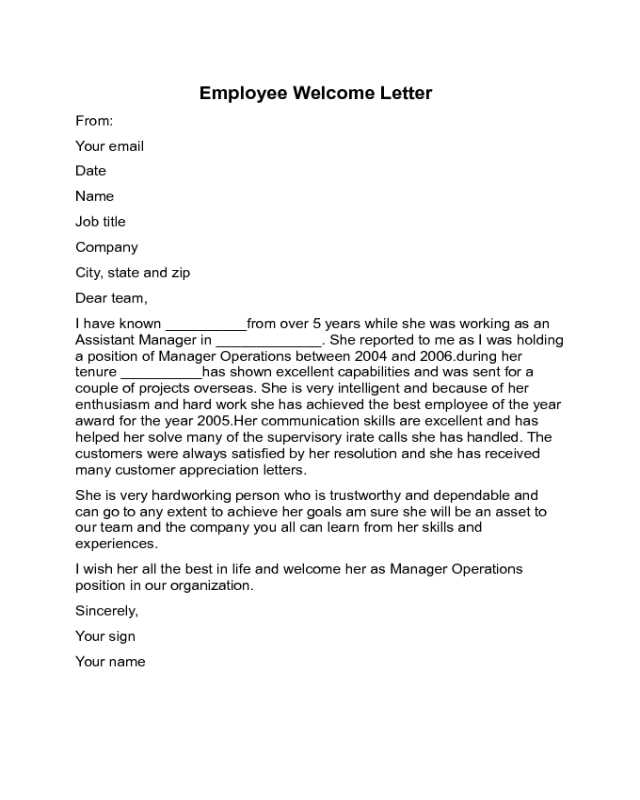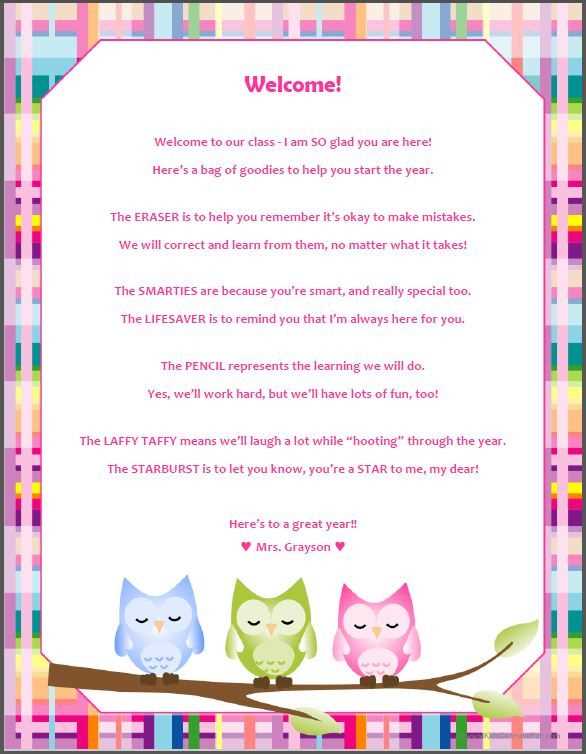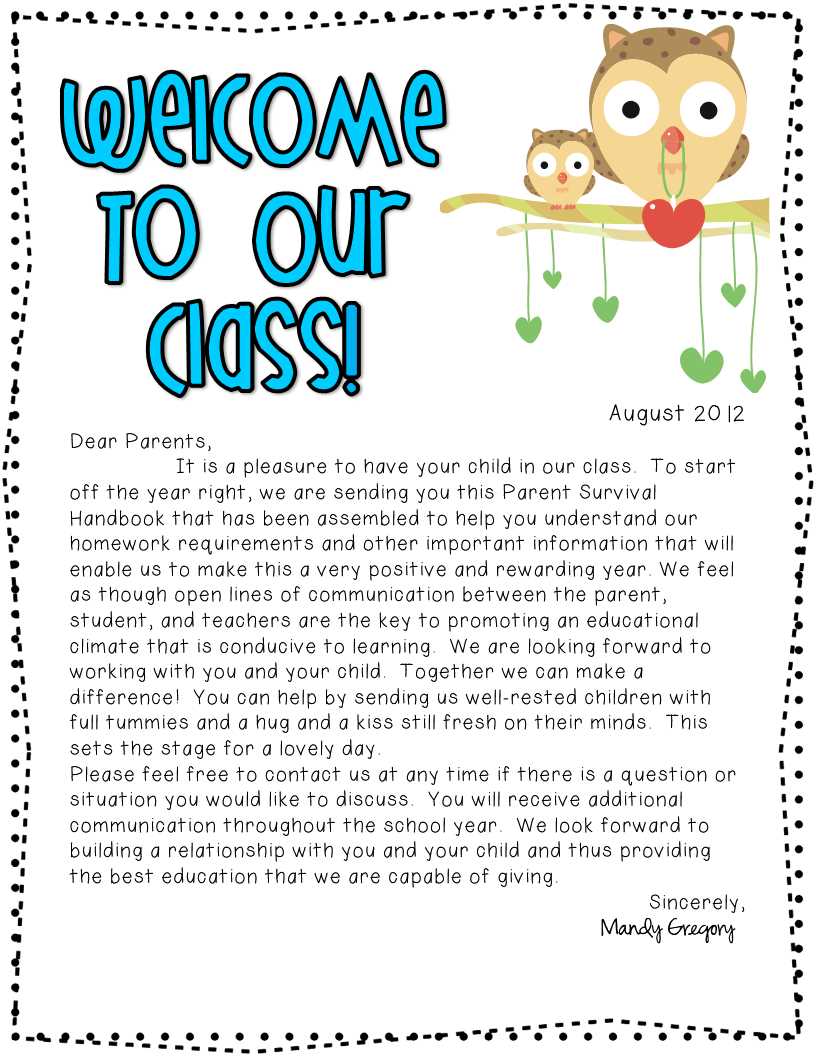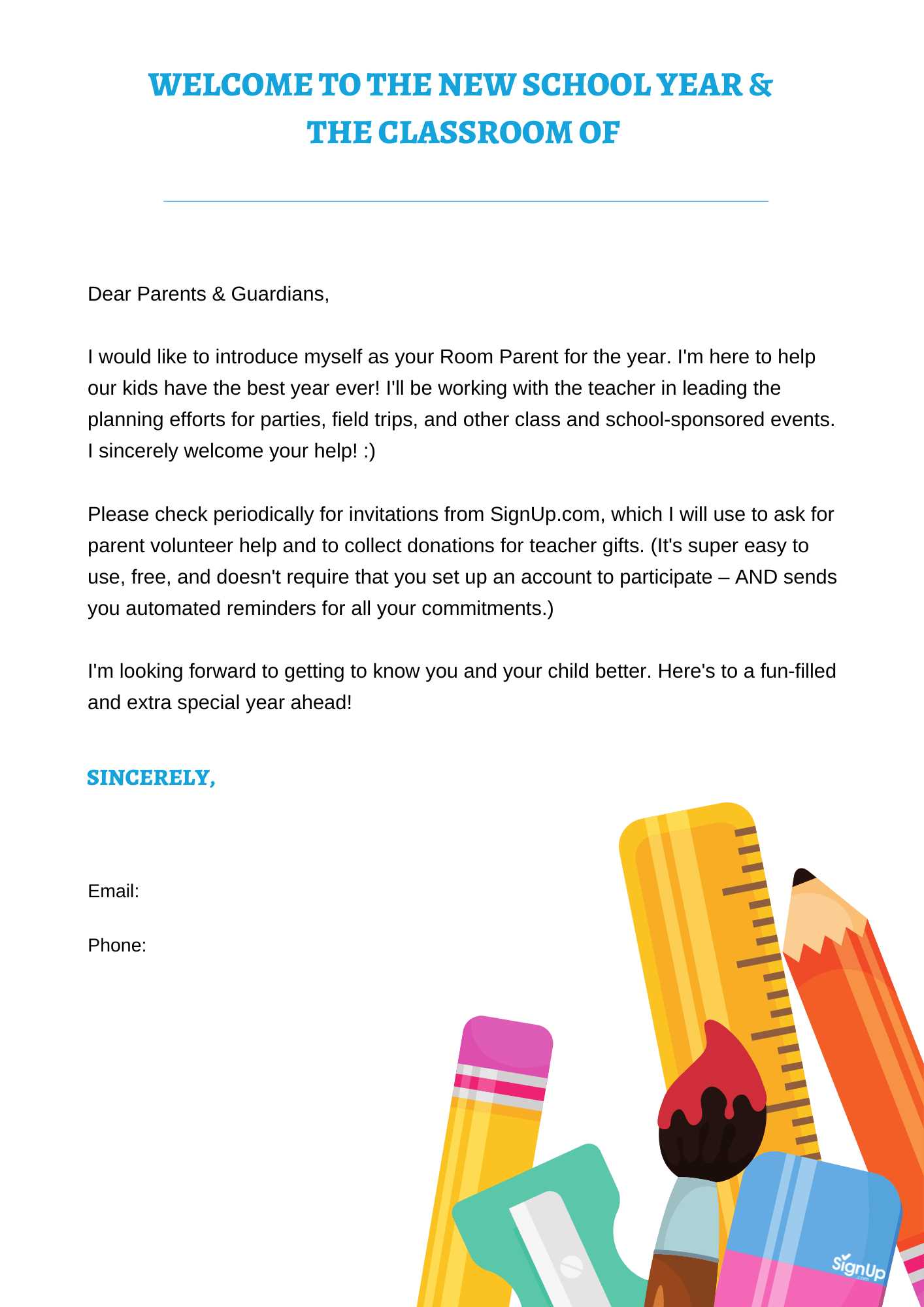Classroom Welcome Letter Template for Teachers

First impressions matter when setting the tone for the new academic year. A thoughtful written message can set a positive atmosphere for both students and their families. It provides a warm, informative way to connect with everyone before classes start and help ease any initial anxiety.
Key Elements of an Effective Introduction

To craft a message that resonates, include the following components:
- Greeting and Introduction – Begin with a friendly introduction to make students and parents feel welcome.
- Purpose and Expectations – Clearly outline the objectives for the year ahead and any important guidelines.
- Contact Information – Ensure parents know how to reach you for any questions or concerns.
Personalizing Your Message

Adding a personal touch helps create a connection. Consider mentioning something about the upcoming year, such as exciting activities or projects. A little enthusiasm can go a long way in sparking interest and motivation in students and their families.
Avoiding Common Pitfalls

While it’s important to be warm and welcoming, be careful not to overwhelm your readers with too much information all at once. Keep your message concise and clear. Also, avoid overly formal language, as it may distance you from the audience you’re trying to reach.
Examples of Strong Introductions
Here are a few examples of messages that have worked well for educators in the past:
- Example 1: “I’m excited to start a new journey with you this year! We will explore new ideas and grow together in a fun and safe environment.”
- Example 2: “Welcome to a new chapter in learning! This year, I look forward to seeing all of you discover new passions and develop important skills.”
By following these guidelines, you’ll create a lasting positive impact and a smooth start to the year for everyone involved.
Effective Communication for Students and Families
A well-crafted initial communication can set the tone for the entire academic year. It is essential to provide students and parents with an introduction that outlines expectations, establishes trust, and fosters a sense of belonging. A thoughtful message helps bridge the gap between the teacher and the families, creating a collaborative environment for learning.
Organizing Your Message
Structure is key when composing your initial message. Start with a warm greeting, followed by a brief introduction of yourself and your goals for the upcoming period. Clearly lay out the expectations, both for academic performance and behavior, and provide essential information such as schedules or required materials. Finish by encouraging open communication and offering your contact details for any queries.
Personalizing Your Communication
Adding a personal touch makes the message more meaningful. Mention specific activities or themes for the year that students can look forward to. Personalization also includes acknowledging the unique qualities of your group, which helps make them feel special and appreciated from the start.
Involving families is equally important. Provide them with ways to stay engaged in their child’s learning, such as through newsletters, parent-teacher conferences, or classroom events. This encourages an active partnership that benefits the student’s growth.
Avoiding Common Pitfalls
While being informative is crucial, it is also important to avoid overwhelming your audience. Keep the message concise and to the point. Avoid using overly formal language that could create distance, and make sure the tone is inviting rather than overly professional. Additionally, ensure that there are no confusing or unclear instructions in the communication.
To wrap up, examples of impactful messages could include a simple, enthusiastic note such as: “I am looking forward to a fantastic year where we will explore, learn, and grow together,” or a brief statement that highlights the excitement for the coming months. These approaches are effective because they balance both warmth and clarity.